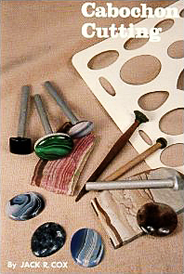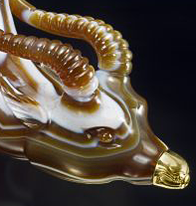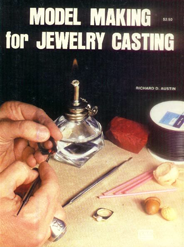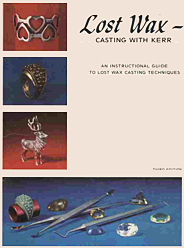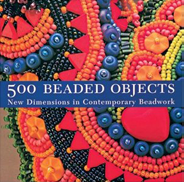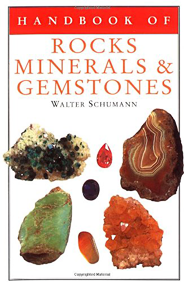CLASSES – SAN DIEGO MINERAL & GEM SOCIETY

General Information
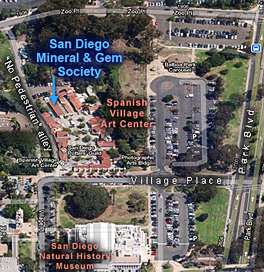
The San Diego Mineral & Gem Society offer its members a range of classes in lapidary and jewelry arts, as well as mineralogy. Classes may change from term to term, depending upon the time of year and the availability of instructors. Our students' work often wins prizes of excellence in competitions such as the San Diego County Fair and other venues. Tour the SDMG classroom.
Schedule of Classes. The new school year for 2022 starts on September 12 (Juniors' class starts September 19). Classes are held until approximately the middle of June. Summer classes are offered by some instructors, while other instructors may take part or all of the summer off. Each class session is held weekly on the date shown on the published schedule. View print-friendly list of classes offered currently.
Class Location. All classes are held in the workshop and/or classroom of the SDMG building in Spanish Village in Balboa Park. View map of SDMG Bldg. location.
REGISTRATION IS REQUIRED BEFORE ALL CLASSES. Classes are open to members only and students must read and follow the School Rules available in the classroom and at: https://sdmg.org/class-schedule/school-rules.pdf. Email school@sdmg.org for class availability before attending any class to find out when the class starts and ends, if special materials are required, and whether you qualify to attend.
Once assigned to a class, check with your instructor to confirm dates, and the basis for how fees will be paid. Most classes should be paid in advance for at least four sessions (one month), and some instructors require fees for a longer period, including for an entire semester. Checks should be made payable to "SDMG" and given directly to your instructor. SDMG can accept cash or checks only; we cannot process credit or ATM cards.
Class Fees. Adult Members – $6.00 per session (3 hours or less) and $8.00 per session (more than 3 hours); Juniors – $1.00 per session.
Additional Costs. In some classes there may be additional fees for materials kits or supplies provided by the instructor (See the individual classes). Also, although SMDG provides the larger more expensive tooling and most basic smaller tools, in some classes, students may want to acquire their own specialized tools or materials to cut. In general, students should expect to spend some additional money for tools, materials and supplies in addition to their basic class fees.
COVID-19. Masks Recommended. The SDMG Covid-19 policy complies with the County of San Diego Public Health which follows the California Department of Public Health (CDPH). Effective March 1, 2022, the CDPH strongly recommends everyone wear a face covering in indoor public settings regardless of vaccination status. SDMG complies with state and municipal public health regulations and guidelines. Please respect the well-being of others who may be immuno-compromised, and wear a mask if your instructor asks you to do so.
Contact SDMG about enrollment. Email SDMG to inquire about specific requirements and space availability in the class you wish to attend. Usually, several classes are full, with waiting lists for students who wish to get into those classes. In your email, include the class, day and time you would like to attend, and include your contact information (email and phone) and best time to call you.
SDMG Class Prerequisites
- SDMG membership required. All prospective students must be members in good standing with the Society.
Not a member? Download a membership application and send it to the membership secretary with your check (mailing address is on the app). Question? Contact the membership secretary. - Juniors. Members age 17 and under are welcome to take Junior Division classes held on Saturdays. Students 11 years of age and under may enroll subject to instructor approval after an interview and visit to the class accompanied by the student's parents. See Juniors' class description below.
- All students must agree to the School Rules in order to take SDMG classes and use the facilities. School rules are also posted in the workshop.
- A class in cutting stone cabochons is a prerequisite for admission to all other classes offered by the Society. The cabochon class provides the basic lapidary skills needed for success in the other classes. Several Cabochon classes are offered weekdays and evenings.
- Introductory classes are prerequisites for some advanced classes, including Advanced Cabochons, Advanced Metals Fabrication, and Advanced Faceting. This requirement may be waived if students can demonstrate to the instructor that they have adequate basic skills from prior training or experience. Exceptions to prerequisite classes will be made on a case-by-case basis.
- A Beginning Metals Fabrication class is a prerequisite for the Lost Wax Casting classes.
Instructors' Statement
Classes
Download a print-friendly class schedule
Class Descriptions
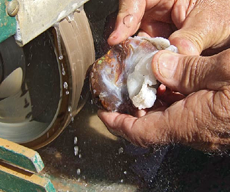
Cabochon Cutting & Polishing is considered the most important course in lapidary crafts, because this is where students learn the process of shaping and polishing a cabochon. SDMG has a large, well-equipped shop, and our instructors will teach you everything you need to known in order to cut and polish beautiful cabochons. Starting material is available in the shop, and students can quickly find local supplies (stores, shows, fellow students) for obtaining material from modest to magnificent. Advanced cutters may be interested in L.D. Hughes' book on cutting Fire Agate
Cab classes are prerequisites for ALL other classes offered by the Society. Classes are offered at both the beginning and advanced level by several different instructors. The general class offers basic, hands-on workshop skills in lapidary arts. The primary objective is learning to cut stone cabochon gemstones (gems that have a smooth, curved, highly shiny surface, without facets, that reflect the light). Large, rough material can be slabbed for students on the class 18- and 22-inch diamond saws, and students can then cut their slabs into smaller, usable pieces on the 10-inch diamond bladed trim saws. They will learn to use wax to put a slice of stone on a stick and hold up the "dopped" stone for grinding and successively finer sanding and polishing wheels in order to shape and smooth the final gemstone into something that can be set successfully into a piece of jewelry. Along the way, students will learn about different types of rocks and minerals and how to obtain and select materials for cutting. The first cabochon usually will be made out of obsidian provided by the class. Thereafter, students will need to provide their own cutting materials, which can be obtained from fellow students, field trip collecting, or purchased at the various club functions such as the annual Spring picnic and Gem Diego Show, as well as other sources.
Cabochon classes are on-going, with new students joining the experienced ones as space permits. We want you to begin your first cab class when you can attend at least 4 consecutive weekly sessions, to get the most out of the instruction. You'll pay the $24.00 class fees (for your first 4 weeks) to the instructor when you start her/his class. We can only accept cash or checks at the class.
When you have a starting date and come in to begin a cab class, wear work clothes, as water spray and oil mist will get on you. No open-toed shoes or sandals are allowed, tie back any long hair, and bring safety glasses. Hearing protection is also recommended, and many people like to wear a plastic apron. We'll provide everything else needed to make your first cabochon.
While you're taking your cabochon class, we encourage you to visit classes in other subjects, and talk with those instructors about tools and materials required in them, and to ask when they will have space available.
Faceting is the art of cutting gemstones with angled flat surfaces for setting in jewelry In contrast to a cabochon, which has a smooth, curved surface that reflects light, a faceted stone is cut with precisely-angled flat planes, or facets, which are oriented to allow light to enter the stone at critical angles and then be refracted so that the light bounces back out of the top of the stone to create lively color and brilliant plays of light, or dispersion. This is the most common type of stone sold in jewelry stores. Gemstones with high public recognition, including diamonds, sapphires, rubies and emeralds, as well as non-traditional stones, are often faceted.
In our classes, students learn how to rough-cut (pre-form) gem materials using diamond saws, mount them on special dops in a faceting machine, and then cut and polish the precisely arranged facets around the top and bottom of the stone. Most instructors teach the "meet-point faceting" technique. Rotating laps (diamond and/or oxide-charged disks) of successively finer grits are used to grind and polish the facets. In general, beginners will cut a "round brilliant" shape from clear quartz as their first stone. Later, with experience, they can cut many other, sometimes quite valuable materials in a myriad of basic and fancy cuts. (Note: SDMG cannot cut diamonds on its equipment.)Our shop uses both Facetron and Ultra Tech machines, and equipment from the lapidary room is used to cut rough material. The faceting room has ten work stations.
We have one Advanced Faceting class (Wed mornings) that focuses on innovative cuts and designs in cutting stones. Other classes involve a mix of old hands and beginners, and can take new beginners as space becomes available. Contact the individual instructors for more information.
Metals Fabrication & Casting. After you have finished polishing of a beautiful stone, many students want to go on and set their stone as a unique piece of custom-made jewelry. SDMG offers a variety of classes in precious metal work, including Beginning, Intermediate and Advanced Metals Fabrication. The Society also offers classes in Lost Wax Casting of silver and gold. More classes are offered in these jewelry subject areas than any other topic. Due to limited space, classes are limited to 6–7 students per session.
Beginning Metals Fabrication. These classes will teach basic skills in torch soldering, sawing, filing, texturing, finishing, stone-setting and other basic skills. We have both short-term classes (ex: 8 weeks) and long-term classes (2 full semesters). In the former, basic skills are taught through work on a particular project. In the latter, a full college- level metals program is taught focusing on learning many techniques and projects. Contact the individual instructors to understand how their classes are taught.
Intermediate Metals Fabrication. Taking basic metalsmithing a step forward, this project-based workshop will focus upon expanding your bench skills. We'll work to improve your comfort level and control of the Smith acetylene torch, improve and refine saw control using mixed metals to create depth and add dimension to your pieces, develop drill and burr control using the pendant motor as we explore new methods of setting stones, and learn techniques to add hand-made clasps, closures, bails, and decorative ear wires to finish your pieces. This workshop is meant to prepare you for Advanced Metalsmithing workshops, where more open-studio time is available with minimal instruction.
Advanced Metals Fabrication As with beginning metals classes, advanced metal classes come in two types. Most classes are offered as open studios for folks with some experience, with the instructor available to offer some help, if requested. Students with basic skills can refine those skills and work on their own projects. One class does not work in the silver room, but in the Library and it focuses predominantly on practicing the art of chasing and repousse (Wed. days with Jackie Leverone). Formal instruction is generally not offered. The other type (Wed days with Denny Turner) is a formal, 2-semester- long program that uses a rotating list of advanced, specialized topics taught as formal presentations and as collaborative explorations (depending upon the topic).
Lost Wax Casting instructors teach wax carving of models, investing/burn-out, spin-casting, mold making and finishing of pieces. The class structure is fairly informal. We offer mold-making through both the use of hot-temperature vulcanized rubber and cold-temperature RTV processes.
The silver room and casting room are supplied with most major equipment (torches, rolling mill, flexible shaft machines, bench shears, soldering equipment, burnout oven, casting and vacuum investing machines, etc.). A basic hand-tool kit is available for both silver and casting disciplines. In both disciplines, students are encouraged to acquire and bring a personal hand-tool kit (est. cost $100.00). Students are expected to supply their own silver or other precious metals. Consumables such as mold rubber, investment, sand paper, wax sheet, solder, saw blades, and flex shaft polishing wheels are available for purchase.
Wire Wrapping is another way to turn your cabochon into jewelry without use of a torch and soldering or drilling a hole into it. Wire-wrapping is a creative way not only to hold a stone (and/or other elements such as beads, beach glass, or wooden elements), but the patterns of wire that are used to hold these elements can be very decorative and creative in their own right. Using special pliers (often two pair simultaneously), loops of various gauges and colors of wire are tightly drawn, twisted, and woven together to form the piece. Commercial wires are available in copper, silver, and other metals in a host of colors and gauges. One can make pendants, rings, bracelets, etc. We have a beginning wire-wrapping class on Thursday mornings. A class in metals fabrication is NOT a prerequisite, (although a class in cutting cabs is).
Rock Carving is the art of taking a piece of stone and using a variety of tools to carve, chisel, smooth and polish it into a realistic or abstract 3-D shape. Most work uses a flexible shaft machine to spin a host of small diamond and other carving and polishing tools. The piece must be kept wet in order to eliminate dust and keep the tools cool. Part of the class is devoted to the creation of a wet carving station. Beginners start out shaping a peanut (complete with textured shell). The second project is "the leaf," a flat-back, carved-front relief piece. Thereafter, students can work on projects of their own choice. All instruction is done in the studio without formal lectures.
Sphere Making is the art of carving large or small balls out of stone. To make stone spheres, blocks of stone are pre-formed into a cube on diamond bladed saws, then the corners are cut off, and, finally the high nubs are ground down on a grinder. Then, the pre-form is placed in a sphere machine comprised of two or three grinding cups charged with either diamond or silicon carbide. The cups are spun by low-RPM gear motors and the pre-form is wetted with a continual supply of dripped water and silicon carbide (unless diamond is being used). Finer and finer grits are used to sand and shape the pieces, and finished with polishing the stone. Students in this class have access to several sphere-making machines and the grinding and polishing equipment of the lapidary studio.
Junior Division. SDMG Members aged 17 and under can sign up for the Juniors class. Like the adult Society Members, all new students need to learn basic lapidary skills first. See the description of the cabochon classes above. Students must be tall enough to stand at the grinding and polishing machines. After the basic lapidary skills have been learned, some students can move into other skills during the class. Beginning soldering torch work, wire wrapping and other skills are taught, depending upon class interest and student abilities.
The class sponsors one of the General Meetings each year. The Junior Division also goes on special field trips to mines and other venues, staffs a booth at the annual Gem Diego Show, and enters an exhibit at the San Diego County Fair to show off its work.
Special requirements and recommendations. Youngsters under 12 should first attend a class with their parents to check it out and have an interview with the instructor. Contact us to arrange an appointment.
Tour the Classroom

